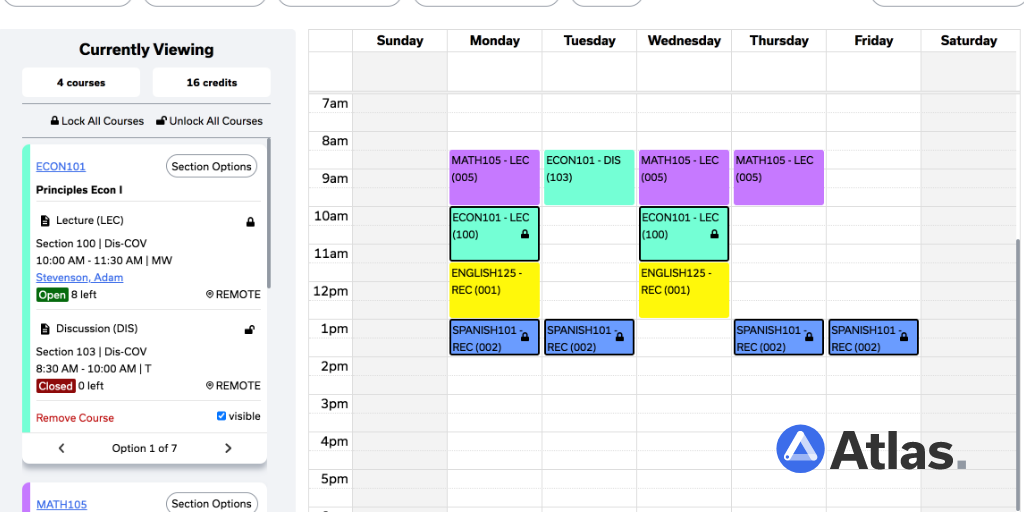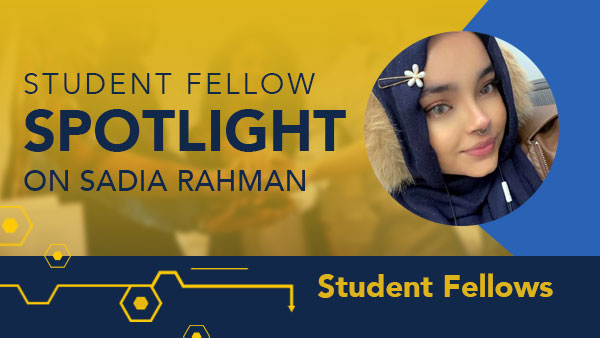
Parnia Mazhar, Communications Fellow

August “Gus” Evrard is an Arthur F. Thurnau Professor in the departments of Physics and Astronomy, and the Michigan Center for Theoretical Physics. He studies phenomenological problems in cosmology through the use of computational modeling of the formation and evolution of large-scale cosmic structure. Evrard has also worked to develop various informational tools at the University of Michigan for years, and was first involved in the development of the program Academic Reporting Tools (ART 1.0), around 2003. Most recently, he worked with the Center for Academic Innovation to develop the successor to Art 1.0 — Atlas, a tool that displays historic data about U-M curriculum to guide students, instructors, and staff in decision-making. The center is launching the new Atlas Schedule Builder program on March 24 to facilitate the class registration process for the U-M community.
We recently asked Evrard about his journey working with the Center for Academic Innovation to develop and grow the application, as well as about what he sees coming next for Atlas.
What are some of the new or upcoming developments in Atlas that you’re most excited for, and why?
Certainly I’m excited by the new schedule builder application and the many, many hours of collective time it will save students during backpacking. It represents a natural extension of our Bookmarks & Collections features. Speaking of which, I’m also excited about sharing collections – a feature we just rolled out last week. I’ve already built course collections for two new Interdisciplinary Physics (IP) degrees, one focused on IP & Climate and another on IP & Data Science.
What’s it been like seeing the growth of the platform from its beginnings as ART to its current form as Atlas?
It’s extremely gratifying to see the design & development efforts made by the Atlas team be justly rewarded by the response. During backpacking month, we host nearly 100,000 visits from roughly 25,000 visitors. That’s a lot of eyeballs! What’s great is that the growth has been organic – no one is forcing you to use Atlas and we don’t buy ads on Google or Facebook. People come because they’re getting authentic content that they value. Access to genuine facts is a critical need these days, and Atlas is a place to retrieve facts that matter to members of campus, whether it be information about class sizes, instructor qualities, or the nature of degree options on campus.
What has your experience been like working with the Center for Academic Innovation?
It helps to remember that Atlas has very deep roots at U-M. Way back in 2002, I started down a path to develop the Academic Reporting Tools (ART) service for LSA faculty. ART was built by a single developer and went live in 2006 (it’s still active today in essentially its original form!). Tim McKay’s proposal for a Digital Innovation Greenhouse (DIG) rebooted ART (along with E-Coach and Student Explorer) around 2015. The ART 2.0 team included a designer, a developer, and a small committee that helped frame the look and function of the ART 2.0 service (rebranded as Atlas in 2019). The Center for Academic Innovation (CAI) combined DIG with other resources a few years later , forming a much larger entity with a broader support portfolio that now features full-stack developers, user experience designers, behavioral scientists, and a growing number of data scientists, to support research into the impact of CAI services such as Atlas.
What challenges were you hoping to solve through the development of the new schedule builder tool in Atlas?
My daughter graduated with a U-M PitE degree several years ago, and watching my daughter as she navigated registering for classes made me appreciate the juggling act that students go through. She then went on to do a masters degree at the University of Washington, and they had a very nice home-grown, calendar-based system in place there for schedule building. Simplifying the process of discovering course options and fitting them into a schedule is a key aim of the new SB tool.
Why do you think schedule builders are valuable for students, especially for those at the University of Michigan who actively participate in backpacking?
A basic, but super important, aspect of Atlas is that it is an internet service; it’s an app. The world is awash with apps now, some that really work great and many that are utterly frustrating. Especially during the pandemic, we’ve learned how important screen time efficiency is. Our hope with SB is that students will be able to design their schedule, communicate with advisers and peers, and deploy their registration, all from the Atlas platform.
What does the future hold for Atlas? What are some of the things you are doing now to lay the groundwork for the future?
The original goal of ART 2.0 – to provide historical views of courses, instructors, and degrees to the Ann Arbor campus – is largely met by Atlas. But some people, like department chairs or academic advisers, could benefit from deeper dives into these curricular data. To meet this need, we’re piloting a Magnify button to allow authorized users to go deeper. We’re also starting to look at how different student cohorts use Atlas; international students, for example, use the service more intensively than domestic students. Why? We don’t know yet, but the finding raises some interesting questions. More generally, Atlas could provide useful insights into academic pathways of students, the focal subject of a two-day flash conference that Cait Hayward of CAI and I, along with Mitchell Stevens of Stanford, ran in January.
A big and complex area is what to do about recommending options to students. Except in some of our Spotlight features, the user is in control of the information Atlas presents to them. Now there’s a lot to look at already, and it’s growing and evolving every semester. Technically, it’s not at all hard to feed Registrar Office information about a particular student along with Atlas’ historical data into an algorithm that filters and sorts “optimal’’ degree/course/instructor choices to that user. The big question is: what are we actually accomplishing by doing that? What does “optimal’’ mean in this context? If we reinforce existing behaviors, aren’t we just perpetuating current inequities? The way forward, I think, is for college leadership and advising offices to engage with the Atlas team to design recommender/filtering services that specifically align with college goals. Don’t get me wrong – colleges are doing a lot to promote a rich array of opportunities to students via web pages and other means of communication. But Atlas could play a useful role because we capture student attention at key decision-making points in their careers. And in an information-drenched world, attention is a precious and increasingly scarce commodity.


